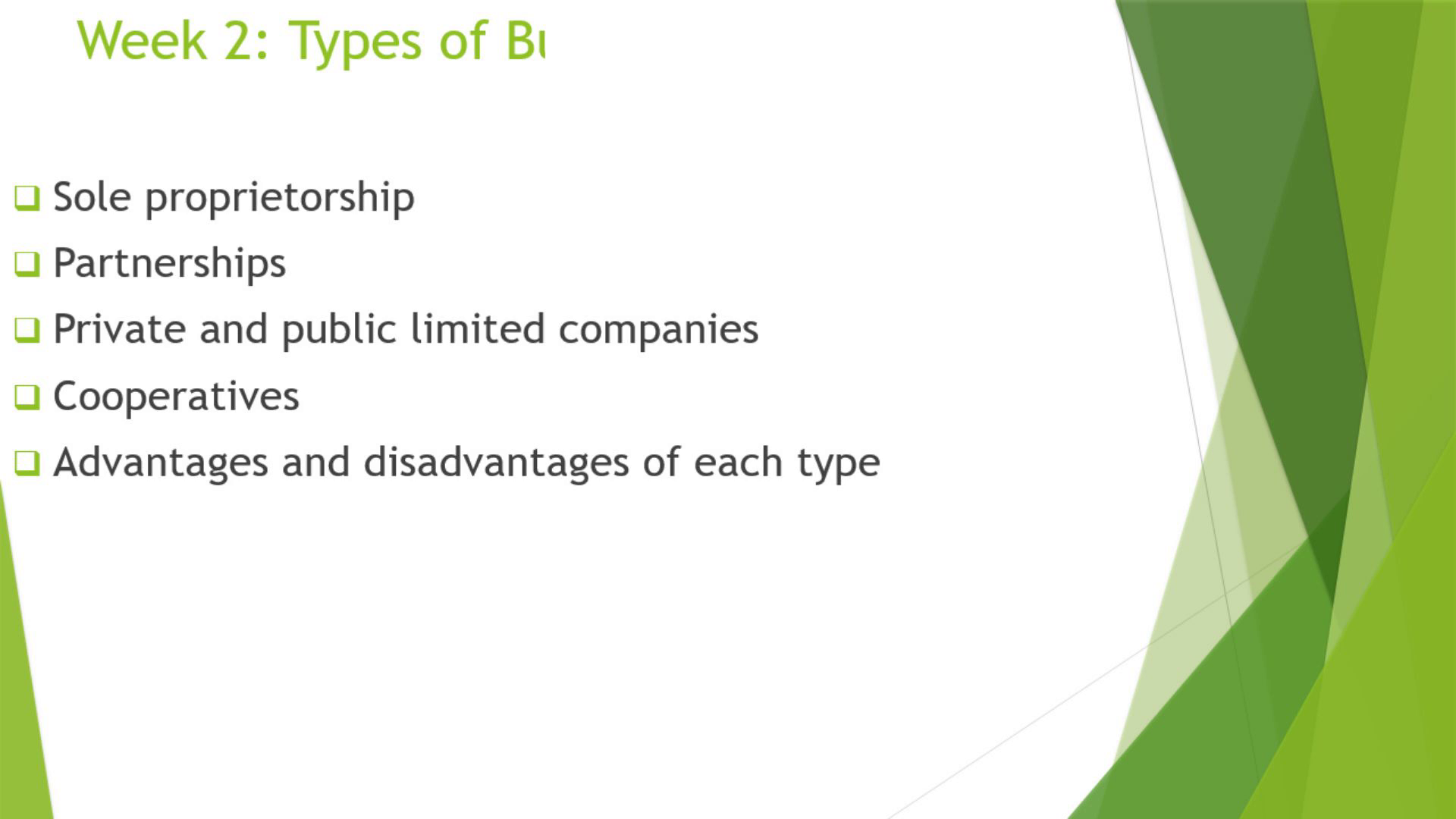
Week 2: Types of Business Organizations
Scene 1 (0s)
Week 2: Types of Business Organizations. Sole proprietorship Partnerships Private and public limited companies Cooperatives Advantages and disadvantages of each type.
Scene 2 (10s)
A sole proprietorship is a business owned, managed, and controlled by a single individual. The owner has unlimited liability, meaning they are personally responsible for all debts and obligations of the business. It is simple and inexpensive to set up, requiring minimal legal formalities. The owner has full control over business decisions and retains all profits. However, the business and owner are legally the same entity, so personal assets are at risk if the business fails. Sole proprietorships often face limitations in raising capital and may lack diverse expertise.
Scene 3 (49s)
Full Control: The owner makes all decisions and keeps all profits. Business and Owner are One: No legal distinction between the owner and the business. Advantages: Easy and inexpensive to establish. Owner has complete control over business decisions. Profits belong entirely to the owner. Less government regulation compared to other business types. Disadvantages: Unlimited liability means personal assets are at risk. Limited capital as funding depends on the owner’s resources. Business continuity depends on the owner’s presence. Limited skills and expertise if the owner lacks certain knowledge. If you want, I can also help you create slide content or bullet points for this topic! Would you like that?.
Scene 4 (1m 41s)
A partnership involves two or more individuals who share ownership, management responsibilities, profits, and losses according to a formal agreement. Partners combine their skills, knowledge, and financial resources to run the business. Most partnerships have unlimited liability, where each partner is personally liable for business debts, except in limited partnerships or limited liability partnerships (LLPs) where liability may be restricted. Partnerships benefit from shared workload and diverse expertise but can face challenges such as disagreements among partners and instability if a partner leaves.
Scene 5 (2m 19s)
Types of Partnerships General Partnership: All partners share responsibility and liability equally. Limited Partnership: Some partners have limited liability and limited involvement in management. Limited Liability Partnership (LLP): All partners have limited liability, protecting their personal assets. Advantages More capital available than in sole proprietorships. Shared responsibility and workload. Diverse skills and expertise. Simple and flexible to set up. Disadvantages Unlimited liability for general partners. Profits must be shared. Potential for disagreements and conflicts. Partnership dissolves if a partner leaves (unless otherwise agreed)..
Scene 6 (3m 8s)
Private limited companies are owned by a small group of shareholders and their shares are not available to the general public. They enjoy more control and face less regulation but have limited access to capital. Public limited companies, on the other hand, offer shares to the public through stock exchanges, allowing them to raise substantial capital. However, they are subject to stricter regulations and greater public scrutiny. Public companies often have more complex management structures and are accountable to a wider group of stakeholders.
Scene 7 (3m 42s)
COOPERATIVES: Definition:A cooperative is a business organization owned and operated by a group of individuals for their mutual benefit. Members contribute equally to the capital and have equal voting rights regardless of their investment amount. Key Features: Owned and controlled by members who use its services Democratic governance (one member, one vote) Profits distributed to members based on their use of services Focus on meeting members' needs rather than maximizing profits Voluntary and open membership Types of Cooperatives: Consumer cooperatives (retail, housing, healthcare) Producer cooperatives (agricultural, artisanal) Worker cooperatives (employee-owned businesses).
Scene 8 (4m 24s)
Cooperatives are business organizations owned and operated by members for their mutual benefit. Members contribute equally to the capital and have equal voting rights regardless of their investment size, promoting democratic governance. Profits are distributed based on members’ use of the cooperative’s services rather than capital invested. Cooperatives focus on meeting members’ needs rather than maximizing profits. They are often found in sectors like retail, agriculture, and housing. While cooperatives share risks and resources and promote community welfare, decision-making can be slower and access to capital more limited compared to other business types.